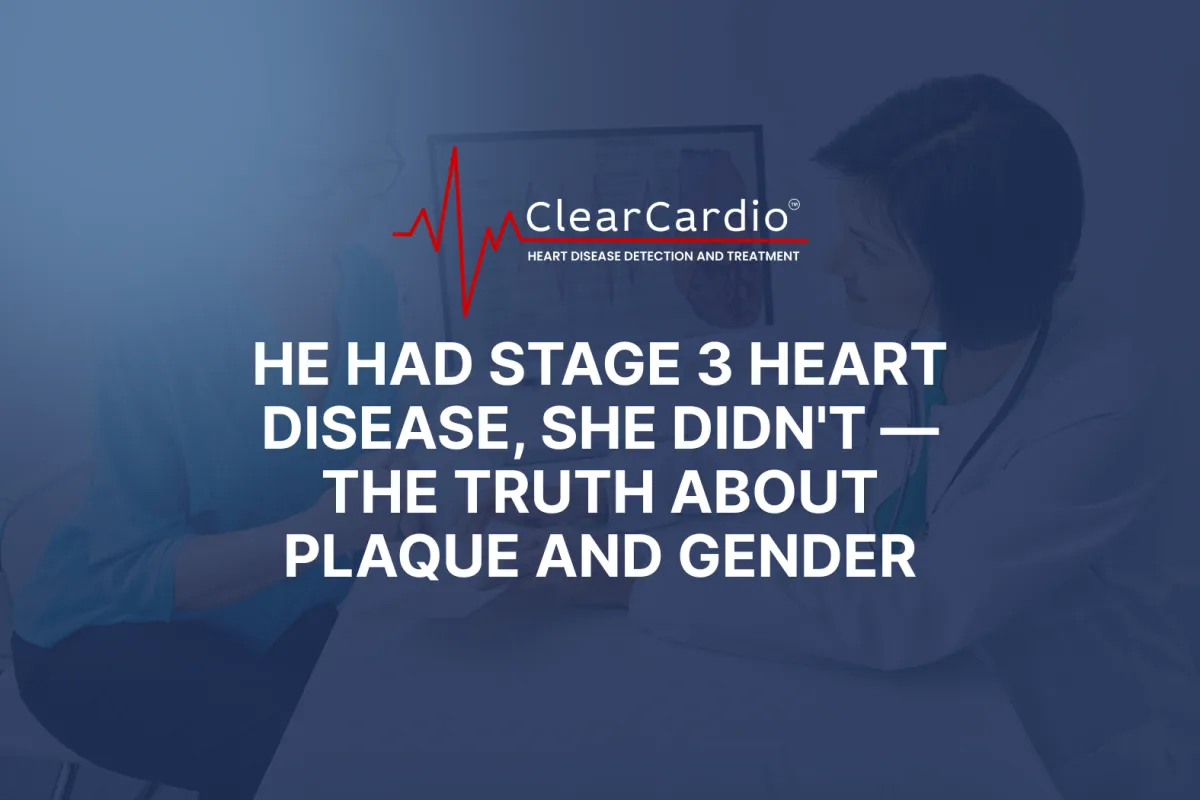
He Had Stage 3 Heart Disease, She Didn't — The Truth About Plaque and Gender
Dr. John Osborne | ClearCardio
Welcome to ClearCardio's Prevention is Power podcast, where we help you take control of your health and protect your future. In this eye-opening episode, we tackle heart disease's shocking gender differences that most people never consider. Heart disease is the number one killer of both men and women, but symptoms, risks, and outcomes look dramatically different between genders.
Dr. John Osborne reveals these differences through a real-world case study of a married couple, both ages 56-57, with identical risk factors and cholesterol levels. Using advanced cardiac CT and AI analysis, one spouse had minimal plaque despite high cholesterol, while the other had severe, life-threatening disease requiring immediate intervention. Same genetics, same environment, same lab values, completely different outcomes.
"Just like colonoscopy, we don't gamble our lives saying, 'well, I think my colon's fine. I don't have polyps.' No one would gamble that. However, cardiovascular disease is still the leading cause and the greatest likelihood of what will take you to your grave." — Dr. John Osborne
Key Takeaways from This Episode:
Heart disease kills over 1 million Americans annually and is roughly evenly split between men and women when combining heart attacks and strokes.
Heart disease kills more people than the next seven causes of death combined, including all cancers, infectious diseases, and accidents.
Men typically develop heart disease about 10 years earlier than women, with events starting in mid-50s for men and mid-60s for women.
Women catch up to men's heart disease rates by age 65, largely due to hormonal changes after menopause.
Pregnancy complications are powerful predictors of future heart disease: gestational diabetes, preeclampsia, high blood pressure during pregnancy, and premature delivery all indicate 20-30 year increased risk.
AI-powered cardiac CT can now stage plaque like cancer (Stage 1-4) and differentiate between dangerous "lava" plaque and stable "extinct volcano" plaque.
Risk factors (like cholesterol levels) measure potential causes but tell you nothing about whether disease is actually present—you must look directly at the arteries.
Even after 30 years of experience, Dr. Osborne cannot predict who has significant plaque without advanced imaging—the "spidey sense" approach fails.
Heart disease is almost completely eliminatable with current preventive tools, unlike most cancers which cannot be predicted decades in advance.
The case study couple demonstrates that identical risk factors can produce vastly different disease outcomes, making imaging essential for accurate diagnosis.
Resources Mentioned:
ClearCardio 640-Slice Cardiac CT Imaging: clearcardio.com
Understanding Gender Differences in Heart Disease
Pregnancy Complications and Future Heart Disease Risk
AI-Powered Plaque Analysis and Staging
Women's Heart Disease Risk Factors
Advanced Cardiac Imaging vs. Traditional Risk Assessment
